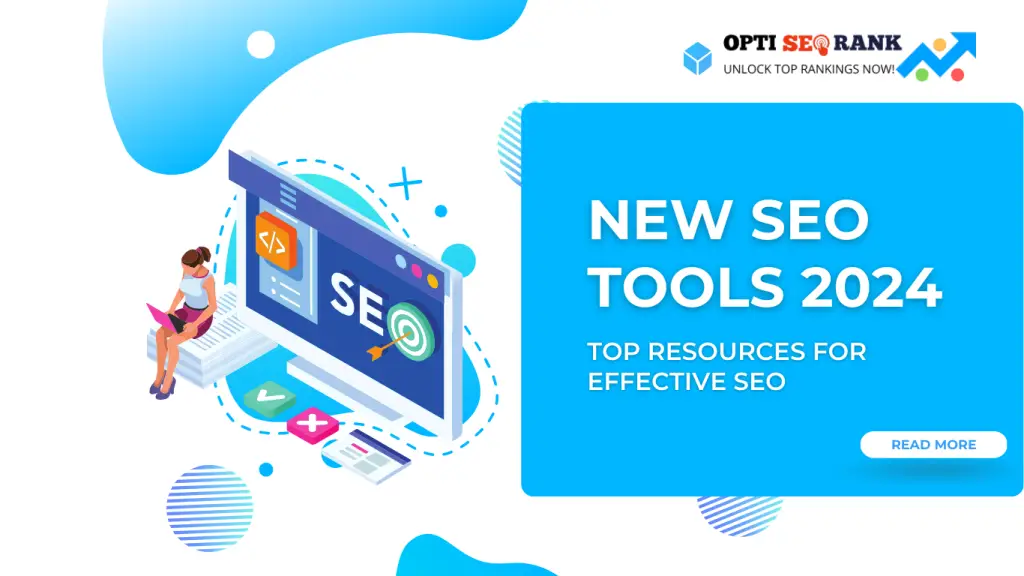Voice search optimization, AI integration, and mobile-first indexing are emerging SEO trends. These trends will reshape how businesses approach SEO.
SEO is constantly evolving, with new trends emerging that significantly impact digital marketing strategies. Voice search is becoming more prevalent, making optimization for conversational queries essential. Artificial Intelligence (AI) is enhancing search engine algorithms, leading to more accurate search results.
Mobile-first indexing prioritizes mobile versions of websites, emphasizing the need for responsive design. Staying updated with these trends ensures that businesses can maintain and improve their search engine rankings. Adapting to these changes can lead to better visibility, increased traffic, and higher conversion rates. Embracing these trends is crucial for staying competitive in the digital landscape.
Voice Search Optimization
Voice search is changing how users interact with search engines. With the rise of smart devices, optimizing for voice search has become crucial. This section explores the growth of voice search and effective strategies for voice search optimization.
Voice Search Growth
Voice search usage is increasing rapidly. As smart speakers and voice assistants like Alexa, Siri, and Google Assistant become common, more users rely on voice commands. This shift means search engines now prioritize voice-friendly content.
Consider these statistics:
| Year | Percentage of Users |
| 2018 | 25% |
| 2020 | 35% |
| 2022 | 55% |
These numbers show the increasing adoption of voice search. Businesses must adapt to this trend to stay relevant.
Strategies For Voice Search
Effective voice search optimization involves several strategies:
- Use Natural Language: Users speak differently than they type. Optimize your content to match conversational queries.
- Focus on Long-Tail Keywords: Voice searches often include more specific phrases. Long-tail keywords help capture these queries.
- Answer Questions Directly: Many voice searches are questions. Provide clear, concise answers to common questions in your content.
- Optimize for Local Search: Voice searches frequently include local intent. Ensure your business information is accurate and up-to-date.
- Improve Page Speed: Fast-loading pages enhance user experience. Speed is a key factor for voice search optimization.
Implementing these strategies can improve your site’s voice search performance. Ensure your content is accessible, engaging, and relevant to voice search users.
Ai And Machine Learning
AI and Machine Learning are reshaping the SEO landscape. They bring automation and smarter decision-making into SEO practices. Understanding these changes helps in adapting SEO strategies effectively.
Role Of Ai In Seo
AI plays a significant role in content creation. It helps generate relevant and engaging content. AI tools analyze user behavior and preferences. This allows for personalized content delivery.
AI also aids in keyword research. It identifies trending keywords and phrases. This ensures your content remains relevant and competitive. AI-driven tools can also predict future search trends.
AI enhances voice search optimization. Voice assistants like Siri and Alexa rely on AI. Optimizing for voice search improves site visibility.
| AI Applications | SEO Benefits |
| Content Creation | Generates relevant and engaging content |
| Keyword Research | Identifies trending keywords |
| Voice Search Optimization | Improves site visibility |
Machine Learning Algorithms
Machine Learning Algorithms analyze vast amounts of data. They provide insights into user behavior and preferences. This data helps in crafting targeted SEO strategies.
Machine Learning aids in ranking predictions. Algorithms predict how changes affect search rankings. This helps in making informed SEO decisions.
Algorithms also enhance user experience. They analyze site performance and user interactions. This helps in optimizing site design and functionality.
- Analyzes vast amounts of data
- Provides insights into user behavior
- Predicts ranking changes
- Enhances user experience
Machine Learning improves local SEO. Algorithms analyze local search trends and behaviors. This helps in optimizing content for local audiences.
Mobile-first Indexing
Mobile-First Indexing is the new standard for search engines. Google now prioritizes the mobile version of websites for indexing and ranking. This shift means that a site’s mobile performance directly impacts its search engine rankings. Mobile-first indexing aims to improve user experience on mobile devices.
Impact On Rankings
Mobile-first indexing significantly affects rankings. Sites optimized for mobile see higher rankings. Poor mobile performance results in lower rankings.
Key factors influencing rankings include:
- Mobile page load speed
- Responsive design
- Mobile-friendly navigation
- Optimized images and media
Websites must meet these criteria to rank well. Google uses these factors to evaluate the mobile version of your site.
Mobile Optimization Techniques
Optimizing your site for mobile involves several key techniques:
- Responsive Web Design: Ensure your site adapts to various screen sizes.
- Accelerated Mobile Pages (AMP): Use AMP to improve load times.
- Optimized Images: Compress images to reduce load times.
- Mobile-Friendly Navigation: Simplify menus for easy navigation.
- Fast Loading Speed: Minimize code and use browser caching.
Implement these techniques to enhance mobile performance. Focus on user experience to keep visitors engaged.
Below is a table summarizing these techniques:
| Technique | Description |
| Responsive Web Design | Adapts site to various screen sizes. |
| Accelerated Mobile Pages (AMP) | Improves load times. |
| Optimized Images | Compresses images for faster loading. |
| Mobile-Friendly Navigation | Simplifies menus for easy navigation. |
| Fast Loading Speed | Minimizes code and uses caching. |
These techniques are vital for mobile-first indexing success. Prioritize mobile optimization to enhance rankings and user experience.
User Experience (ux)
User Experience (UX) is a critical factor in SEO practices. It shapes how visitors interact with your website. A seamless UX can improve your site’s ranking on search engines. Google and other search engines prioritize sites that offer a positive user experience. This means faster loading times, mobile-friendliness, and easy navigation. Let’s delve into emerging UX trends and their impact on SEO.
Ux Metrics
UX metrics help measure the quality of user interaction. These metrics include:
- Page Load Time: Faster pages keep users engaged.
- Mobile Responsiveness: Sites must adapt to different devices.
- Time on Page: Longer time indicates valuable content.
- Bounce Rate: Lower bounce rates show better user retention.
- Click-Through Rate (CTR): Higher CTRs reflect user interest.
| Metric | Importance |
| Page Load Time | Essential for retaining visitors |
| Mobile Responsiveness | Critical for SEO ranking |
| Time on Page | Indicates content quality |
| Bounce Rate | Shows user engagement |
| CTR | Reflects content relevance |
Improving User Engagement
Improving user engagement is vital for better SEO. Here are some strategies:
- Optimize Content: Use keywords naturally and provide valuable information.
- Enhance Navigation: Ensure a simple, intuitive site structure.
- Improve Page Speed: Compress images and use efficient coding.
- Use Interactive Elements: Add videos, infographics, and quizzes.
- Focus on Mobile Experience: Ensure your site works well on mobile devices.
Engaged users stay longer and interact more with your site. This boosts your SEO ranking.
Video Seo
Video content is taking the digital world by storm. It is becoming essential for SEO strategies. Let’s delve into upcoming trends in video SEO and their impact on SEO practices.
Importance Of Video Content
Video content captivates audiences more effectively than text. It increases user engagement and dwell time on your site. Search engines prioritize content that keeps users engaged.
Videos are versatile and can explain complex topics simply. They cater to both visual and auditory learners. Users are more likely to share video content, increasing your reach.
Video content can be repurposed across different platforms. This allows you to reach a broader audience. Engaging videos can boost your brand’s credibility and trust.
Optimizing Video For Search
Optimize video titles and descriptions with relevant keywords. This helps search engines understand your content. Use descriptive and catchy titles to attract clicks.
Implement proper video schema markup. Schema markup helps search engines index your videos. This improves your chances of appearing in search results.
Embed videos on your site with an engaging thumbnail. Thumbnails act as the first impression of your video. A compelling thumbnail can increase click-through rates.
| Optimization Technique | Benefit |
| Keyword-rich titles | Improves search visibility |
| Schema markup | Better indexing by search engines |
| Engaging thumbnails | Higher click-through rates |
Include transcripts for your videos. Transcripts make your content accessible to a wider audience. They also provide additional text for search engines to index.
Ensure your videos load quickly. Slow-loading videos can frustrate users. Compress video files without sacrificing quality.
Host your videos on platforms like YouTube or Vimeo. These platforms have built-in SEO features. They also offer a larger potential audience.
Consider creating a video sitemap. A video sitemap helps search engines find your video content. It provides metadata about your videos, such as duration and category.
Keep your videos short and engaging. Attention spans are short, so get to the point quickly. A concise video retains viewer interest better.
- Use keyword-rich titles and descriptions
- Implement schema markup
- Choose engaging thumbnails
- Provide transcripts
- Ensure fast video loading times
- Host on popular video platforms
- Create a video sitemap
- Keep videos short and engaging
Local Seo
Local SEO is becoming increasingly important. Businesses must focus on optimizing their online presence for local searches. This ensures visibility in their immediate geographic area.
Local Search Trends
Local searches are on the rise. People often search for products and services near them. Voice search is also gaining popularity. Users ask their devices for nearby recommendations. These trends highlight the need for businesses to focus on local SEO.
| Trend | Impact |
| Voice Search | More natural language queries |
| Mobile Searches | Increased need for mobile-friendly sites |
| User Reviews | Greater emphasis on online reputation |
Enhancing Local Listings
Enhancing local listings is crucial for local SEO success. Here are some steps to improve local listings:
- Claim your Google My Business profile.
- Ensure your name, address, and phone number (NAP) are consistent.
- Add high-quality photos of your business.
- Encourage customers to leave reviews.
- Respond to customer reviews promptly.
These steps help improve your local search visibility. Accurate information builds trust with search engines and users. Positive reviews enhance your online reputation. Engaging with customers shows you value their feedback.
Structured Data And Schema
Structured Data and Schema Markup are essential elements in modern SEO practices. They help search engines understand the content on your website better. This understanding improves search engine visibility and enhances user experience. Implementing these tools can significantly impact your site’s performance.
Benefits Of Structured Data
Structured Data offers several benefits for SEO. It provides a more detailed understanding of your content to search engines. This can lead to enhanced search results and improved click-through rates.
- Improves search engine understanding
- Enhances user experience with rich snippets
- Boosts click-through rates
- Increases visibility in search results
- Supports voice search capabilities
Implementing Schema Markup
Schema Markup is a form of microdata. It creates an enhanced description for search engines. Implementing it can be straightforward with the right approach.
- Identify the type of content you want to mark up (e.g., articles, events, products).
- Use Google’s Schema.org to find the relevant markup.
- Generate the necessary code using tools like Google’s Structured Data Markup Helper.
- Insert the generated code into your website’s HTML.
- Test your markup with Google’s Structured Data Testing Tool.
Here is an example of a basic Schema Markup for a blog post:
Adding this code to your blog post helps search engines understand the content better. This may result in rich snippets in search results, increasing click-through rates.
| Content Type | Schema Markup |
| Article | BlogPosting |
| Event | Event |
| Product | Product |
| Recipe | Recipe |
| Review | Review |
Implementing Schema Markup can seem complex, but the benefits are substantial. By enhancing search results, you can draw more traffic to your site.
Content Quality
Search engines are evolving fast. Content quality plays a vital role in SEO. High-quality content attracts more visitors. It also builds trust and authority.
Eat Principles
EAT stands for Expertise, Authoritativeness, and Trustworthiness. These principles are crucial for content quality. Google uses EAT to evaluate web content. Websites with high EAT rankings perform better.
- Expertise: Show deep knowledge in your niche.
- Authoritativeness: Gain recognition from other experts.
- Trustworthiness: Provide accurate and honest information.
Content must reflect these principles. This helps improve search rankings.
Creating High-quality Content
High-quality content is valuable and relevant. It should answer user queries clearly. Use engaging language to keep readers interested.
- Research: Understand your audience’s needs.
- Structure: Use headings, subheadings, and bullet points.
- Originality: Offer unique insights and perspectives.
- Accuracy: Fact-check your information.
- Visuals: Include images, infographics, and videos.
High-quality content boosts user engagement. It also reduces bounce rates.
| Factor | Importance |
| Relevance | High |
| Originality | High |
| Readability | Medium |
| Visuals | Medium |
Focus on these factors to improve content quality. This will enhance your SEO performance.
Frequently Asked Questions
How Is Seo Changing In 2024?
SEO in 2024 focuses on user experience, AI integration, voice search, mobile-first indexing, and high-quality content. Adapt to these trends.
What Has The Biggest Impact On Seo?
High-quality content has the biggest impact on SEO. Content should be relevant, well-researched, and engaging. Keywords, backlinks, and a mobile-friendly design also play crucial roles. Regular updates and user experience improvements boost rankings.
What Is The Future Growth Of Seo?
SEO’s future growth looks promising due to increasing online competition. Voice search, AI, and mobile optimization are key trends. User experience and quality content will drive success. Adaptation to algorithm updates is essential.
What Is Trend In Seo?
A trend in SEO refers to emerging strategies and techniques that improve website visibility on search engines. Popular trends include voice search optimization, mobile-first indexing, and AI-driven content. Staying updated with these trends helps maintain and boost search rankings.
Conclusion
Staying updated with emerging SEO trends is crucial for success. Adapting to changes ensures your strategies remain effective. Embrace these upcoming trends to maintain a competitive edge. Continuous learning and flexibility will help you navigate the evolving SEO landscape. Keep optimizing and your efforts will surely pay off.



